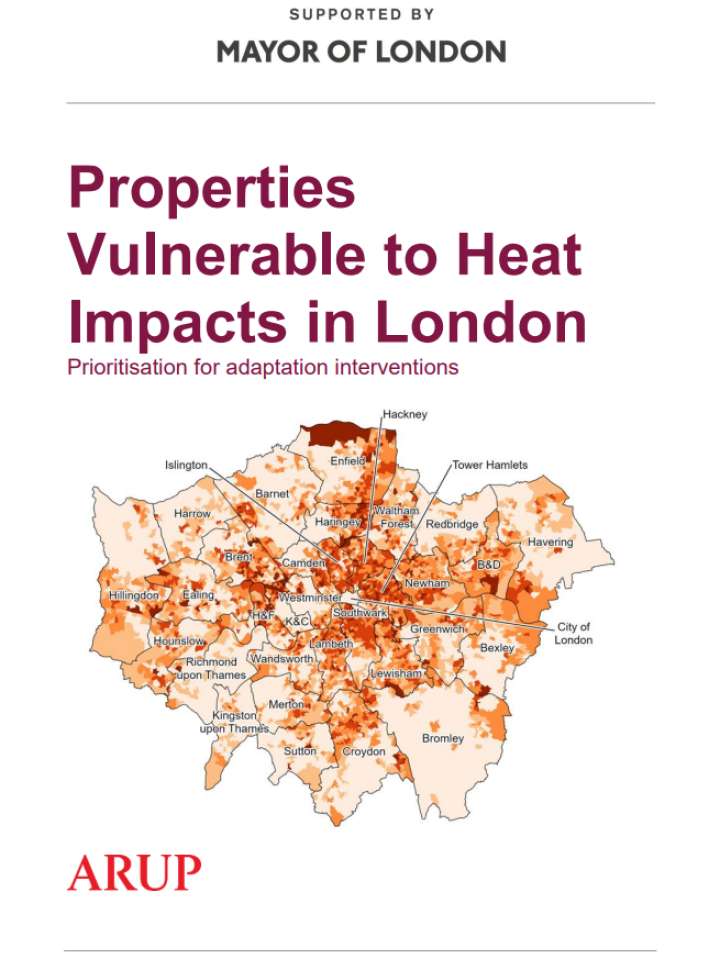Properties vulnerable to heat impacts in London: Prioritisation for adaptation interventions
The Greater London Authority (GLA) has commissioned Arup to carry out this study in recognition of the need for better data to inform a long-term and sustained approach to locate and target interventions in London’s built environment. Urban heat risk is an ever-growing pressure on London’s physical environment and its people, with the most vulnerable people likely to be disproportionately impacted.
The publication listed the following recommendations for catalysing further actions:
- Comprehensive surveys and monitoring: The property heat risk maps can help to prioritise the most at-risk locations in London, but further data would be needed to design mitigation measures. This can be obtained through undertaking in-depth surveys and continuous monitoring of selected properties to gather detailed data on heat vulnerability and occupant experiences.
- Developing and implementing adaptation solutions: Identifying risk is the first step but much work must be done to respond to the risk by identifying and implementing solutions to protect London and ensure the city’s future resilience against heat related impacts.
- Stakeholder engagement. To successfully design and implement solutions, crosssector collaboration across a range of stakeholders is needed. This would entail working with decision-makers across the public and private sectors to disseminate findings, gather feedback, and discuss next steps.
Explore further
